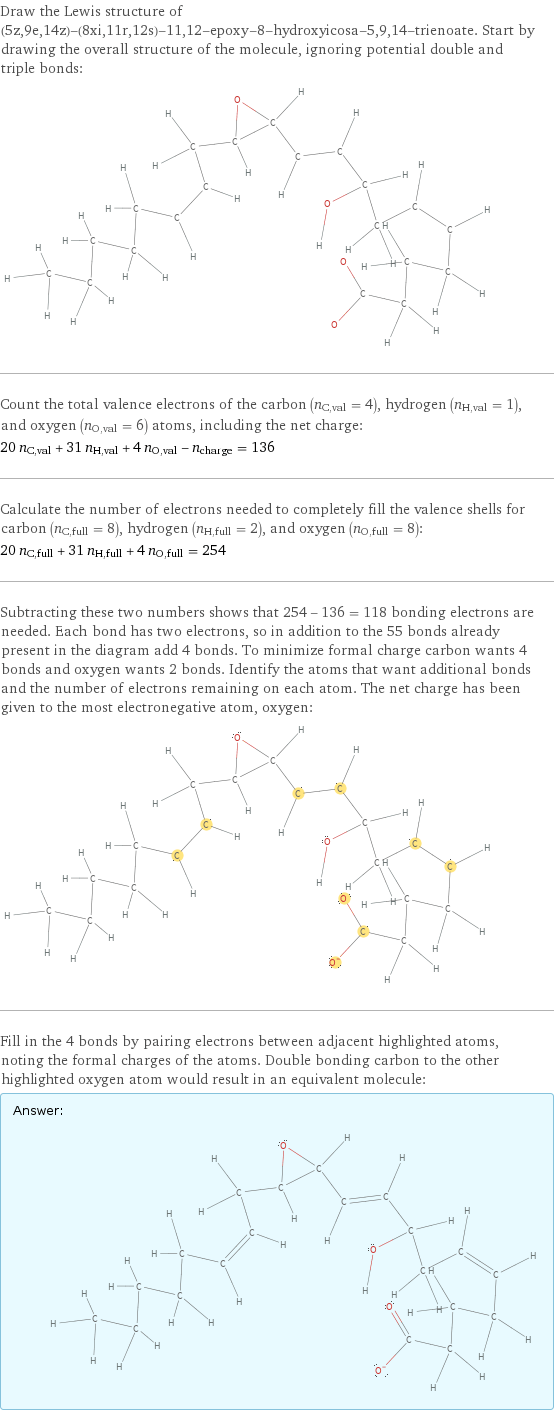Input interpretation

(5z, 9e, 14z)-(8xi, 11r, 12s)-11, 12-epoxy-8-hydroxyicosa-5, 9, 14-trienoate
Chemical names and formulas

formula | C_20H_32O_4 name | (5z, 9e, 14z)-(8xi, 11r, 12s)-11, 12-epoxy-8-hydroxyicosa-5, 9, 14-trienoate mass fractions | C (carbon) 71.6% | H (hydrogen) 9.31% | O (oxygen) 19.1%
Lewis structure

Draw the Lewis structure of (5z, 9e, 14z)-(8xi, 11r, 12s)-11, 12-epoxy-8-hydroxyicosa-5, 9, 14-trienoate. Start by drawing the overall structure of the molecule, ignoring potential double and triple bonds: Count the total valence electrons of the carbon (n_C, val = 4), hydrogen (n_H, val = 1), and oxygen (n_O, val = 6) atoms, including the net charge: 20 n_C, val + 31 n_H, val + 4 n_O, val - n_charge = 136 Calculate the number of electrons needed to completely fill the valence shells for carbon (n_C, full = 8), hydrogen (n_H, full = 2), and oxygen (n_O, full = 8): 20 n_C, full + 31 n_H, full + 4 n_O, full = 254 Subtracting these two numbers shows that 254 - 136 = 118 bonding electrons are needed. Each bond has two electrons, so in addition to the 55 bonds already present in the diagram add 4 bonds. To minimize formal charge carbon wants 4 bonds and oxygen wants 2 bonds. Identify the atoms that want additional bonds and the number of electrons remaining on each atom. The net charge has been given to the most electronegative atom, oxygen: Fill in the 4 bonds by pairing electrons between adjacent highlighted atoms, noting the formal charges of the atoms. Double bonding carbon to the other highlighted oxygen atom would result in an equivalent molecule: Answer: | |
Basic properties

molar mass | 335.46 g/mol
Units

Chemical identifiers
![SMILES identifier | CCCCC/C=C\C[C@H]1[C@@H](/C=C/C(C/C=C\CCCC(=O)[O-])O)O1](../image_source/eafaa29cdf55e2df691609c2999de94d.png)
SMILES identifier | CCCCC/C=C\C[C@H]1[C@@H](/C=C/C(C/C=C\CCCC(=O)[O-])O)O1